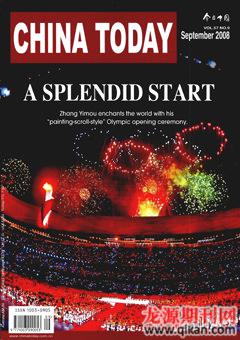Sage Calligrapher Festival:Linyi’s Cultural Calling Card
LI YAHONG
THE Sixth Sage Calligrapher Cultural Festival will be held this September in Shandongs Linyi. “The festival is Linyis cultural calling card presented to the world,”says Zhang Shaojun, mayor of Linyi City and deputy secretary of the CPC Linyi municipal committee.
Linyi began holding the festival in 2003, and has since successfully staged the event five times. As well as enhancing the citys fame, the festival has promoted economic and trade activity.
Creating a Calligraphy City
In ancient times Linyi was known as Langya Prefecture. Its history can be traced back 2,400 years and historically it has produced many famous figures, such as Wang Xizhi (303-361), known as the “sage calligrapher”; Zhuge Liang (181-234), a great strategist and statesman of the Three Kingdoms Period; and Liu Hong (c. 129-210), a prominent mathematician of the late Eastern Han Dynasty who developed the abacus.
“Wang Xizhi is a typical representative of Linyis history and culture, and a name closely identified with the town,” says Zhang Shaojun. “The Sage Calligrapher Cultural Festival has been an important step in making Linyi a famous cultural city in contemporary times.”
Wang Xizhi is a household name in China. During the Jin Dynasty he served in the court as the Right General. His calligraphy is in a strong and bold style, and over the centuries he became revered by different dynasties as the “sage calligrapher.” His calligraphic work Preface to the Orchid Pavilion Collection is known as the “number one calligraphy under heaven.” In downtown Linyi the pond where he washed his ink slabs and the stone terrace where he aired his books in the sun are both well preserved.
In 2003, Linyi adopted the cultural brand name, “hometown of the sage calligrapher.” In 2006, the towns Sage Calligrapher Cultural Festival was chosen from 4,400 festivals across China as one of the ten with the greatest potential, and one of the top ten festivals in the category of culture and arts.
Each year the festival attracts many practitioners who come to show off their calligraphy skills. Zhang Biao, former vice-president of the Chinese Calligraphers Association, remarks, “Only by visiting the hometown of the sage calligrapher can we experience the true charm of Chinese calligraphic art.”
The first five Sage Calligrapher Cultural Festivals featured competitions, forums, and calligraphy and painting exhibitions, involving participants of all levels and from all schools. Also featured were academic discussions, theatrical performances, and economic, trade and tourist activities. Around 2,400 businesspeople have attended the festival from more than 20 countries and regions, such as Japan, the Republic of Korea, the United States, Canada, Hong Kong, Taiwan and Macao. A total of 902 contracts have been signed, involving RMB 71.92 billion. The Sixth Sage Calligrapher Cultural Festival will comprise a broad range of activities, such as calligraphy symposiums, calligraphy exhibitions, trade talks, and tour promotions.
“We plan to build a Chinese Calligraphy City, a sacred palace to showcase calligraphic culture,” says Zhang Shaojun. In Linyi, calligraphy schools are enrolling large numbers of students, and many local hotels and companies are named after the “sage calligrapher.”
Over the past few decades some ancient buildings and old residences have been demolished, but the preservation of historical sites is now being emphasized nationwide. In Linyi, Wang Xizhis former residence has been renovated. Standing in that small courtyard one can imagine how the sage practiced calligraphy 1,700 years ago.
Promoting Urban
Development Through the Cultural Festival
“The Sage Calligrapher Cultural Festival has brought great changes to life in Linyi,” claims Zhang Shaojun. He cites improvements to the urban environment and the citys cultural life. The festival has also attracted much outside investment.
“Mutual promotion of culture and the economy” is an approach repeatedly emphasized by Mayor Zhang. Attracting investment and holding trade talks are some of the most important aspects of the festival. A large number of projects were built for the last event, greatly enhancing the citys cultural facilities and service sector. During the festival, the consumption of attendees adds around RMB 100 million to the towns economy.
Since 2005, the city has completed 36 cultural projects with investment exceeding RMB 10 million, including 11 projects whose investment exceeded RMB 100 million. In 2007, Linyis cultural industry realized a total income of RMB 13.4 billion, and the added value exceeded RMB 5 billion, comprising 3.3 percent of the citys GDP. These developments have made Linyi a leader in cultural industry development in Shandong Province.
The festival has also intensified Linyis urban construction. A large amount of infrastructure has been built, enhancing the citys management and environment. In 2003, authorities built Shuangling Road, and renovated 22 main streets in the downtown area. In 2004, the first stage of Binhe Avenue was completed and Tongda Road renovated. In 2007, a number of cultural projects began operation, such as the Luxin International Convention and Exhibition Center and Kaige International Cultural City. More than ten cultural squares have been built, and along Binhe Avenue a 50-km cultural corridor has been created. A number of new basic cultural facilities, such as libraries, have also been built.
Efforts to promote cultural construction in rural areas have also been intensified. A total of 3,771 cultural courtyards have been built, and 937 rural household reading rooms have been set up, housing 2.1 million volumes of 130,000 titles.
The Sage Calligrapher Cultural Festival has allowed Linyi to build a unique cultural brand name, highlighting the towns charm and historical significance as the hometown of the sage calligrapher. Mayor Zhang Shaojun hopes that through “playing their cultural cards” they can build Linyi into a major cultural center in which ancient and modern civilization enhance each others beauty.
- CHINA TODAY的其它文章
- BASIC CHINESE FOR THE BEIJING 2008 OLYMPIC GAMES
- Discover the Han Heritage in Xuzhou
- Seventy Years Later,James Hilton’s Shangri-la Rediscovered
- Innovation and Excellence:Tianjin University of Finance and Economics
- The Development of an Agricultural City
- The Pig Breeding Industry Benefits Anhui Farmers

